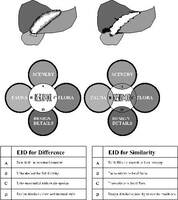- England
- Scotland
- France
- Holland
- Germany
- Italy
- Spain
- Portugal
- USA
- China
- Japan
- India
- Iran
- Advice
- Gardens
- England
- Scotland
- France
- Holland
- Germany
- Italy
- Spain
- Portugal
- USA
- China
- Japan
- India
- Iran
- Advice
- Garden Tours
Book: Landscape Planning and Environmental Impact Design: from EIA to EID
Chapter: Chapter 5 Reservoir planning and design
Reservoirs should develop in the context of landscape plans. A general principle, which can be used to guide decisions about the level of development for particular sites, was outlined by Brenda Colvin in Land and Landscape. She wrote that: Our landscape is of three main types - wild, agricultural and urban... We like the character of each to be strongly marked. The general blurring of outline and loss of individuality that result when a town spreads indiscriminately over open country, or when open space invades a town... degrades the quality of any landscape (Colvin 1973: 227). This principle can be applied to reservoirs in the following manner: Urban reservoirs should be the most developed. In places, the waterfront can resemble that of a harbour, with close-packed buildings and delightful open space. Agricultural reservoirs may absorb limited development but the general aim should be to manage waterside land by agricultural methods. A 'playingï¾field' style of grassï¾cutting and a 'motorway' style of semiï¾wild grassland are equally inappropriate, because they would mark the reservoir as an industrial intrusion. Wild reservoirs should be designed with habitat conservation to the fore. The reservoir should be made to resemble a natural lake: the dam should be moulded into adjoining landforms; the vegetation on the dam face should be established by implanting turves from surrounding pastures; pump houses should be concealed underground or placed in new structures in vernacular styles; roads should be designed using the informal geometry, widths, and materials of local roads; any new tree and shrub planting should be of local species; walls and fences should be in local materials; the management should be that of the surrounding countryside. Colvin's principle is a good guide, but there are exceptions. Multiple use policies in and around reservoirs should be governed by contextual appraisal. As discussed in Chapter 3, the Environmental Impact Design of a development project can be planned to have a relationship of similarity or difference between the project and its surroundings [Fig 5.7]. 5.7 Reservoirs can be similar to or different from their surroundings. Difference is likely to be the best policy in an urban area. Similarity will normally be best in a wild place. Similarity is the best policy in areas of high scenic quality. In a beautiful wilderness, for example, reservoirs should have a wilderness character. But if the scenic quality is low, a reservoir should be different from its surroundings, perhaps as a recreational 'honey pot'. An urban reservoir might also be different from its surroundings. Instead of being surrounded with buildings, they can become dreamlike wildlife reserves, with a semi-natural habitats floating above the city. EID rests on contextual analysis. The present need is for each water supplier to carry out a full assessment of its land holdings, as the Welsh Water Authority attempted in its Strategic plan for water space recreation and amenity (Welsh Water Authority 1980). It can then formulate landscape development plans for each reservoir. The plans should make proposals for habitat creation, scenic quality, recreation and the use of waterfront land.

